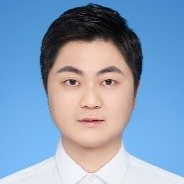Advanced Digital Signal Processing for Future Digital Communications
A special issue of Electronics (ISSN 2079-9292). This special issue belongs to the section "Circuit and Signal Processing".
Deadline for manuscript submissions: 1 May 2024 | Viewed by 11574
Special Issue Editor
Special Issue Information
Dear Colleagues,
Digital communication is a communication method that uses a digital signal as the carrier to transmit messages or uses a digital signal to digitally modulate the carrier and then transmits it. It has the characteristics of strong anti-interference ability, controllable transmission error, easy encryption, and easy storage. Digital communication systems are the dominant type of communication system and are widely used in mobile phones, computers, video telephones, network conferences, and so on. Digital communication systems are developing towards high speed, large capacity, and long distance. Digital signal processing (DSP) is a process of transforming analog signals into digital signals and using special technology to expand the processing. At present, digital signal processing technology has been applied in image processing, military, medical, communication, and other fields. In the future, digital signal processing will develop towards the research of fast and efficient algorithms, high-speed hardware implementation, and new application research.
This Special Issue focuses on the application of digital signal processing algorithms to future digital communication systems to help the reader clarify the motivations and methods of various signal processing algorithms to use them for hitherto undeveloped services as well as future scenarios of communication systems. Potential topics include, but are not limited to the following:
- Advanced coding and modulation/waveform techniques;
- Agile and efficient multiple access techniques;
- MIMO signal processing techniques;
- Radar signal processing techniques;
- Reconfigurable intelligent surfaces-assisted techniques;
- Underwater signal processing techniques;
- Channel modeling, sensing and measurement techniques;
- Sparse signal processing for grant-free massive connectivity;
- Signal processing optimization for federated learning.
Dr. Da Chen
Guest Editor
Manuscript Submission Information
Manuscripts should be submitted online at www.mdpi.com by registering and logging in to this website. Once you are registered, click here to go to the submission form. Manuscripts can be submitted until the deadline. All submissions that pass pre-check are peer-reviewed. Accepted papers will be published continuously in the journal (as soon as accepted) and will be listed together on the special issue website. Research articles, review articles as well as short communications are invited. For planned papers, a title and short abstract (about 100 words) can be sent to the Editorial Office for announcement on this website.
Submitted manuscripts should not have been published previously, nor be under consideration for publication elsewhere (except conference proceedings papers). All manuscripts are thoroughly refereed through a single-blind peer-review process. A guide for authors and other relevant information for submission of manuscripts is available on the Instructions for Authors page. Electronics is an international peer-reviewed open access semimonthly journal published by MDPI.
Please visit the Instructions for Authors page before submitting a manuscript. The Article Processing Charge (APC) for publication in this open access journal is 2400 CHF (Swiss Francs). Submitted papers should be well formatted and use good English. Authors may use MDPI's English editing service prior to publication or during author revisions.
Keywords
- digital signal processing
- digital communication





